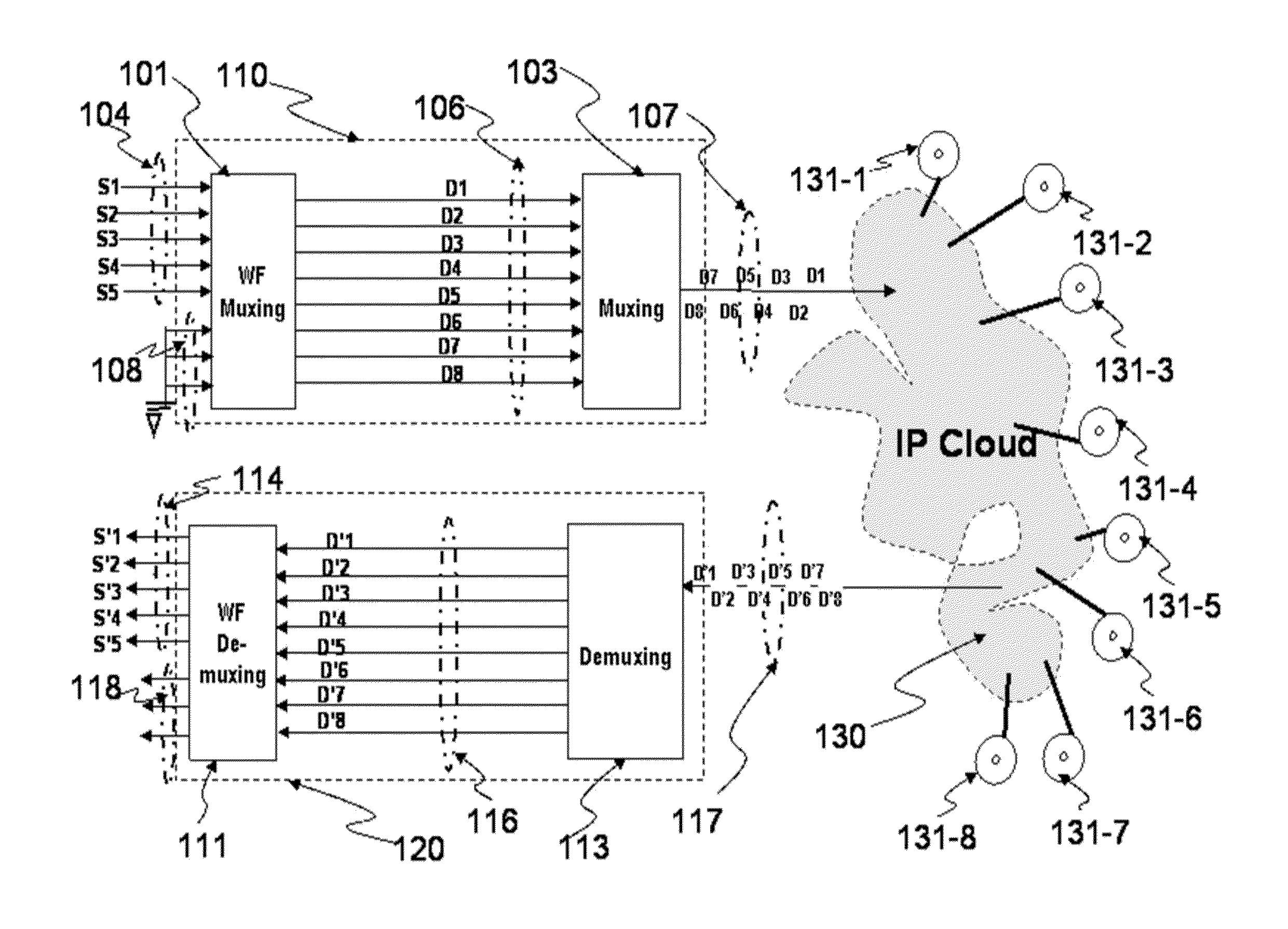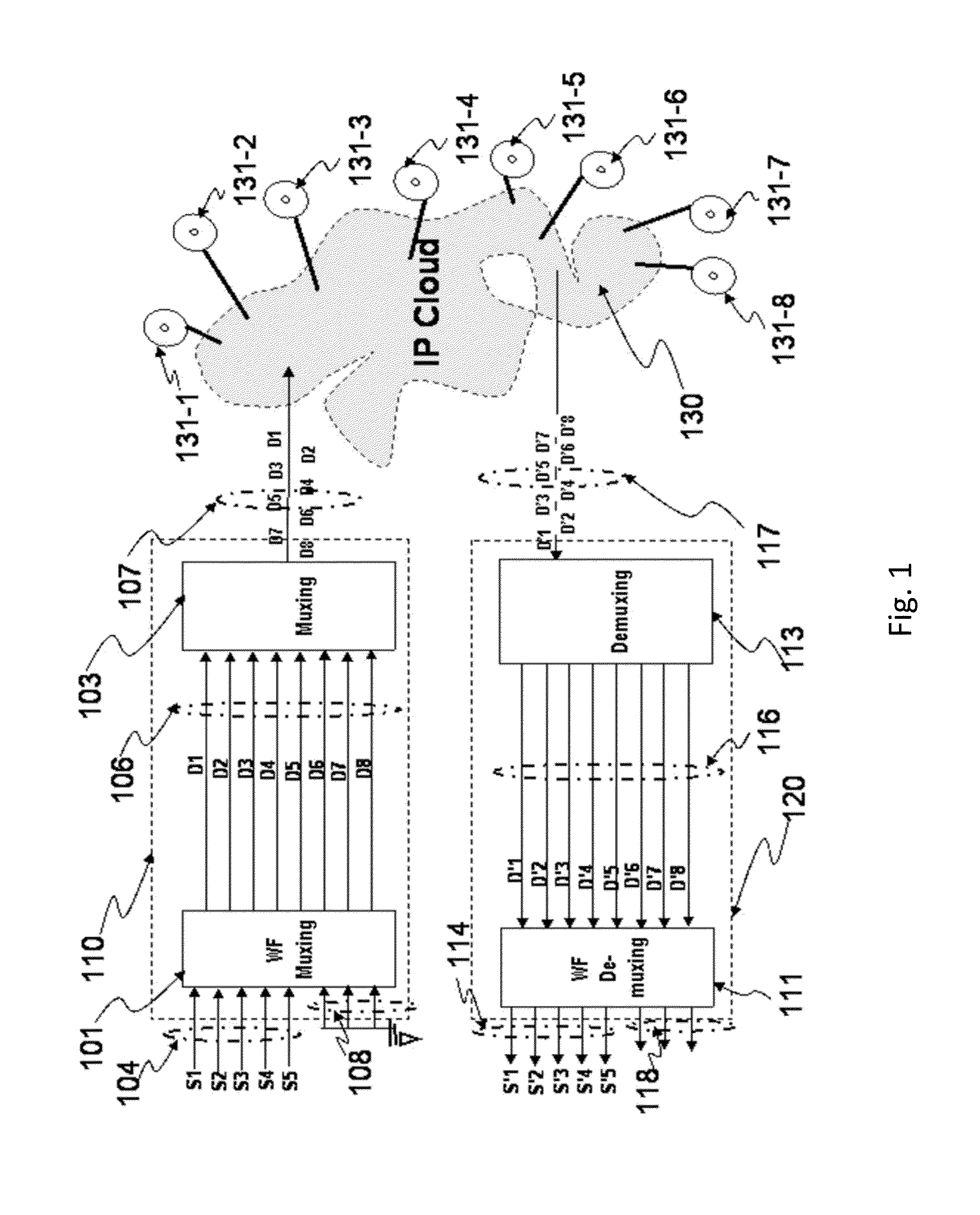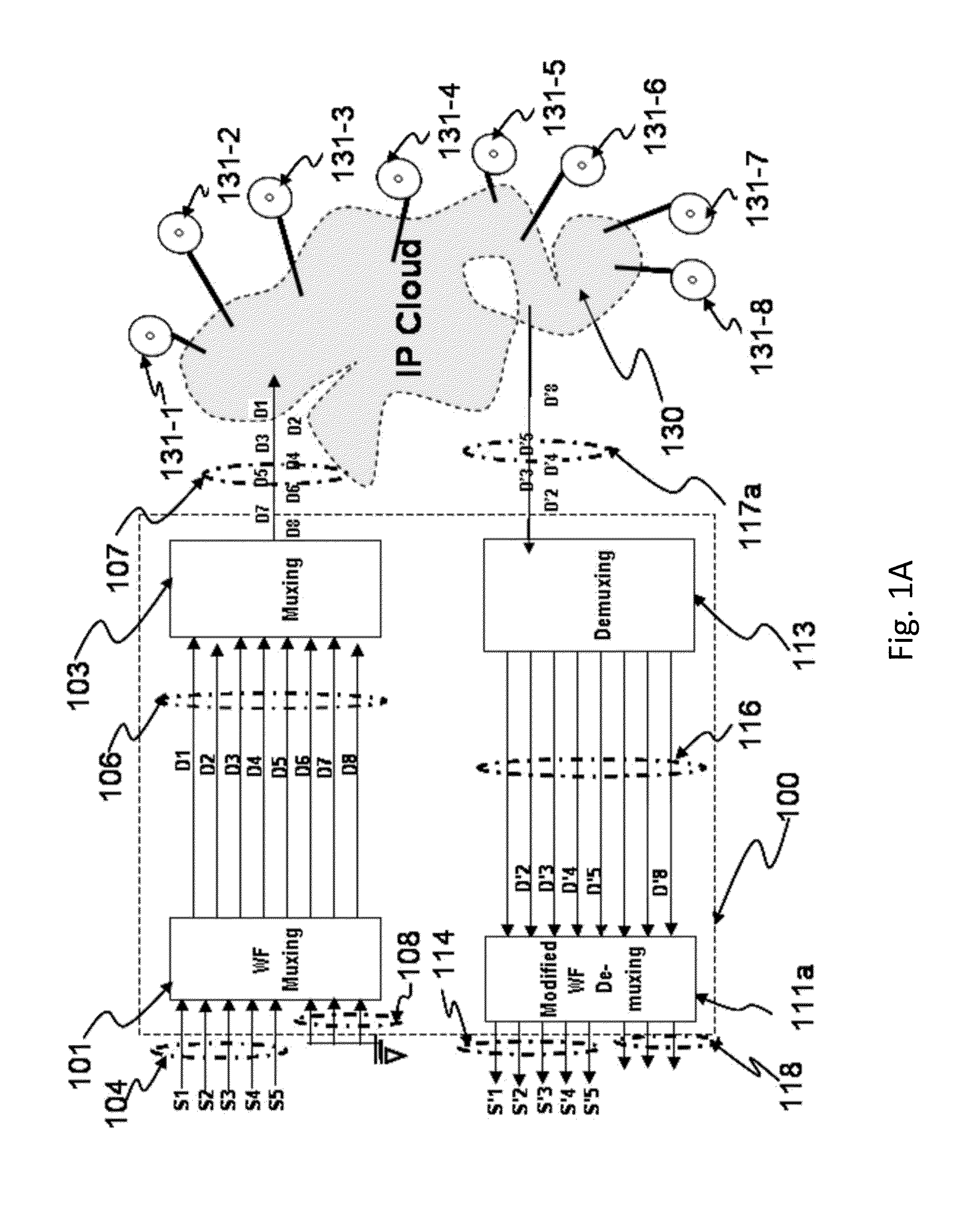Wavefront muxing and demuxing for cloud data storage and transport
a cloud data storage and cloud data technology, applied in the wave field, can solve the problems of slow mechanical components, waste of data duplication space, and inability to meet the needs of data storage, etc., and achieve the effect of improving privacy, reliability and survivability of stored (image) data
- Summary
- Abstract
- Description
- Claims
- Application Information
AI Technical Summary
Benefits of technology
Problems solved by technology
Method used
Image
Examples
embodiment 1
[0072]FIG. 1 depicts an operation concept of using WF multiplexing techniques for storing 5 sets of input data 104, S1, S2, S3, S4, and S5 in 8 physically separated data storage sites, i.e. memory sets, 131-1 to 131-8 connected through IP Cloud or Internet. It also shows a retrieval process for the 5 sets of input data. There are three segments including (1) a pre-storage processing 110, (2) cloud storage 130 including multiple of the memory sets at downstream of the pre-storage processing 110, and (3) post retrieval processing 120 at downstream of the cloud storage 130. The storage sites, i.e. memory sets, 131-1 to 131-8 may feature nearly equal data storage space.
[0073]Pre-Storage Processing 110:
[0074]In the pre-storage processing, an 8-to-8 WF muxer 101 is used to convert 5 sets of input data 104, i.e. S1, S2, S3, S4 and S5, to 8 sets of output data, i.e. D1, D2, D3, D4, D5, D6, D7 and D8, where:
D1=S1+S2+S3+S4+S5 (1-1)
D2=S1−S2+S3−S4+S5 (1-2)
D3=S1+S2−S3−S4+S5 (1-3)
D4=S1−S2−S3+S...
embodiment 2
[0102]FIG. 3 depicts an operation concept of using the above WF multiplexing techniques for storing 5 sets of data 104, i.e. S1, S2, S3, S4 and S5, as well as a diagnostic / authentication data set 105A, i.e. Sx, in the 8 data storage sites 131-1 through 131-8 physically separated but connected through IP Cloud. Referring to FIG. 3, it also shows the retrieval processing of the 5 data sets 114, i.e. S′1, S′2, S′3, S′4 and S′5, and the diagnostic and authentication set S′x 115A from the 8 storage site 131-1 through 131-8. It is assumed the 5 data sets 104, i.e. S1, S2, S3, S4 and S5, and the diagnostic / authentication data set 105A, i.e. Sx, feature nearly identical data sizes. Each of the outputs or data sets 106, i.e. D1-D8, may be a linear combination of the inputs 104 and 108, i.e. including S1-S5 and Sx, each weighted by a corresponding weighting parameter. Each of the outputs 106, i.e. D1-D8, contains information associated with all of the inputs 104 and 108, i.e. including S 1-S5...
embodiment 3
[0187]The techniques of video streaming via multiple mirroring sites via wavefront multiplexing depicted in FIGS. 6A, 6B, 6C and 6D consist of three segments; (1) a pre-storage processing 610, (2) Mirroring site in IP network 630, and (3) data streaming processing 620. The multiple mirror sites 631 feature nearly equal data storage space. An example of streaming a video with a 100 minute play time in real time is utilized in here to illustrate the operation concepts. Elements in FIGS. 6A, 6B, 6C and 6D having the same reference number as those in FIGS. 1, 1A, 2A, 2B, 3 and 3A may refer to those illustrated in FIGS. 1, 1A, 2A, 2B, 3 and 3A.
[0188]FIG. 6A depicts a data preprocessing and storage portions of an operation concept of using WF multiplexing 101 techniques for video streaming via multiple mirroring sites. FIG. 6B is a top level functional diagram for storing the WM muxed video substreams. Referring to FIGS. 6A and 6B, the video stream 105 with a 100-minute playing time may b...
PUM
 Login to View More
Login to View More Abstract
Description
Claims
Application Information
 Login to View More
Login to View More - R&D
- Intellectual Property
- Life Sciences
- Materials
- Tech Scout
- Unparalleled Data Quality
- Higher Quality Content
- 60% Fewer Hallucinations
Browse by: Latest US Patents, China's latest patents, Technical Efficacy Thesaurus, Application Domain, Technology Topic, Popular Technical Reports.
© 2025 PatSnap. All rights reserved.Legal|Privacy policy|Modern Slavery Act Transparency Statement|Sitemap|About US| Contact US: help@patsnap.com



